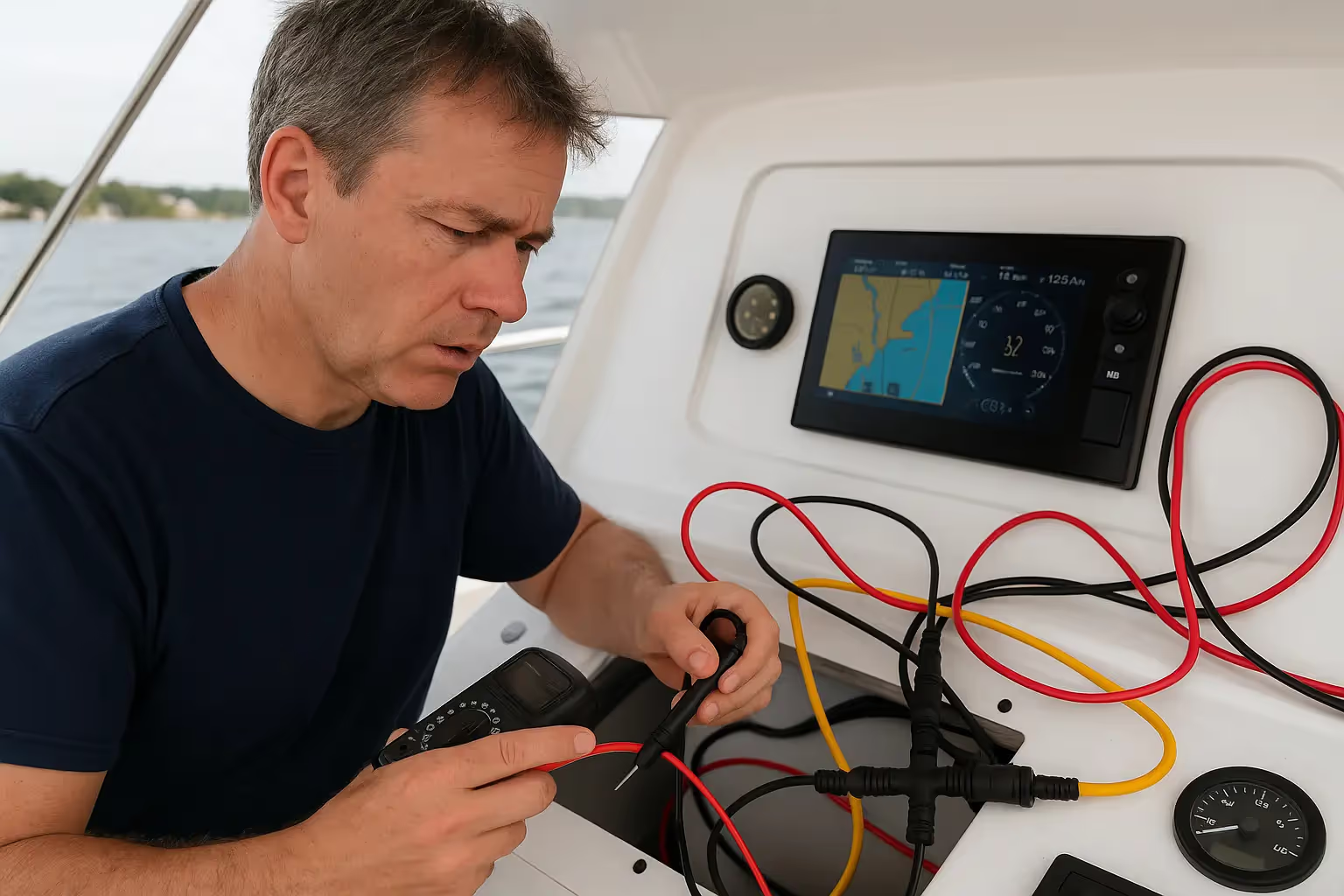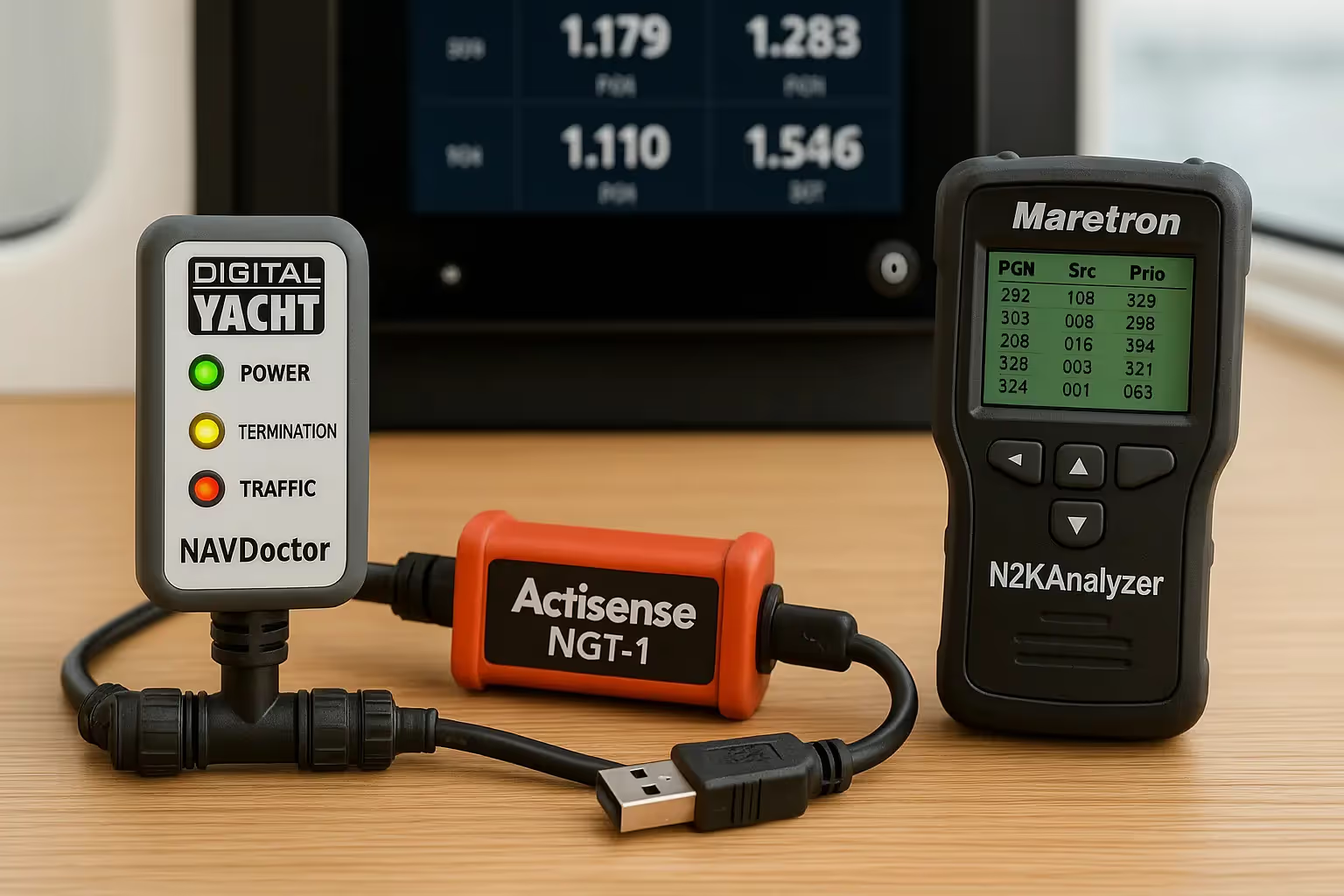Harnessing the Winds: Using Modern Forecasts Online for Sailing
.jpeg)
Section 1: In-Depth Look at Popular Online Forecast Tools
PredictWind
- Features: Offers detailed forecasts, route planning tools, and GPS tracking. It integrates GFS, ECMWF, UKMO, and proprietary PWG and PWE models for comprehensive data.
- Best For: Sailors who require precise route planning and those going on long voyages.
Windfinder
- Features: Offers real-time observations from more than 20,000 weather stations. Its Superforecast is based on the high-resolution weather model, offering hourly updates.
- Best For: Day sailors, surfers, and kiteboarders who require immediate wind and weather data.
Windy
- Features: Visual and interactive weather maps that offer layers for wind, rain, temperature, and clouds. It also includes webcam views and a community feature for sharing insights and tips.
- Best For: Visual learners and those who are looking for a detailed, map-based approach.
PassageWeather
- Features: Focuses on offshore weather forecasts, providing data on wind, wave, and weather conditions for up to 7 days. It also includes GRIB file downloads for offline access.
- Best For: Offshore cruisers and those planning transoceanic trips.
Section 2: Forward Planning and Passage Planning
Overview of Forward Planning in Sailing:
- Proactive planning is essential in ensuring a successful sailing trip.
- Make use of online forecasting tools to enhance decision-making and route planning.
Identifying Favorable Weather Windows:
- Use forecasts to pinpoint periods of stable, favorable weather conditions.
- Avoid routes with predicted fast-moving storms or extreme weather events.
Analyzing Wind Patterns for Route Planning:
- Interpret and analyze wind forecasts to determine prevailing wind directions and strengths.
- Tailor the sailing route accordingly to take advantage of favorable winds and avoid challenging conditions.
Considering Sea State and Conditions:
- Assess predictions of waves and swells to help you choose manageable routes.
- Have an understanding of how sea conditions can impact the speed and safety of the journey.
Planning for Contingencies:
- Have alternative routes and strategies in place for unexpected weather changes.
- Recognize and understand the importance of flexibility in sailing, and always be ready to adapt as conditions evolve.
Utilizing Multiple Forecasting Tools for Comprehensive Planning:
- Cross-reference data from different online tools to get a more reliable forecast.
- Balance predictions from various sources to gain a more holistic view of expected conditions.
Regularly Updating Weather Information:
- Keep on top of the latest weather updates during the voyage.
- Adjust your plans as needed based on real-time weather information.
Incorporating Local Knowledge and Expertise:
- Consult local sailors or maritime authorities for region-specific advice.
- Integrate local insights with forecast data for enhanced route planning.
Documenting and Reviewing Plans:
- Keep a log of weather forecasts and route decisions for future reference.
- Analyze your past sailing experiences to improve future planning and decision-making.
This approach to forward planning combines that careful analysis of online forecasts with seasoned sailing wisdom and equips sailors with the tools they need for a favored passage plan, balancing safety with the joys of navigating the open seas.
Section 3: Navigating the Limitations of Forecasts
Inherent Uncertainty of Weather Forecasts:
- Acknowledge that weather forecasting, even with the help of advanced technology, involves degrees of uncertainty.
- Always remember that forecasts are predictions, not guarantees, and conditions can change unexpectedly.
Diminishing Accuracy Over Time:
- Forecasts are most reliable for up to 4-5 days. Beyond this, conditions can change unpredictably.
- Always plan trips with a cautious approach to long-range forecasts, and be aware of their lessened precision.
Rapid Development of Weather Systems:
- Understand that weather systems, like storms, can develop very quickly and unpredictably.
- Weather systems like Storm Ciaran in the UK and Ireland this year can develop quickly, and this underscores the need for constant vigilance
Limitations in Specific Regions:
- Certain geographic areas may have less reliable or less frequent forecast updates.
- Local knowledge in these regions is essential as it is required to supplement online forecasts.
The Role of Backup Forecasting Methods:
- In areas like the UK, it is a good idea to supplement online tools with VHF and SSB shipping forecasts, and in Western European waters, including the renowned BBC Shipping Forecast for additional reliability.
- The renowned BBC Shipping Forecast is a valuable resource for additional reliability.
The Importance of Continuous Monitoring:
- Forecasts require regular updates throughout the sailing journey. This has become more straightforward with the availability of satellite communications and broadband even far out at sea.
- It is crucial to be vigilant and ready to adapt to changing conditions at sea.
Developing Contingency Plans:
- It is essential to have alternative routes and safe harbors in case of unexpected weather changes.
- One always needs to be prepared for a range of scenarios, as this ensures safety and flexibility. One needs to be aware that all systems can fail, by anything, such as a lightning strike for example.
By understanding these limitations and the importance of backup and continuous monitoring, sailors can better navigate the unpredictable sea, ensuring a safer and more enjoyable experience.
Conclusion:
In conclusion, the art of sailing is deeply enriched by the use of modern online forecasting tools. While these tools offer invaluable insights for planning and navigating the seas, understanding their limitations is equally as important. Sailors need to blend technology with traditional wisdom, continuously updating their knowledge and remaining adaptable to constantly changing conditions. The sea, with its unpredictable nature, demands respect and preparedness. By harnessing the power of digital forecasts and seasoned experience, sailors can embark on voyages that are safe and deeply rewarding, truly capturing the essence of what it means to sail with the winds.
FAQs
How accurate are online sailing forecasts?
Online forecasts are generally accurate up to 4-5 days. However, weather conditions can change very quickly, so it's essential to regularly check updates and understand their limitations.
Can I solely rely on online forecasts for sailing?
While online forecasts are a great tool, they should not be your only source of information. Always back them up with VHF and SSB shipping forecasts, especially in areas like the UK and Western Europe.
How can I use forecasts to plan my sailing route?
You can use them to identify favorable weather windows, understand wind patterns, and assess sea conditions. This information will help you choose the safest and most enjoyable route.
What should I do if a forecast changes suddenly while I'm at sea?
You should always have a contingency plan. If the weather changes very suddenly, be prepared to alter your course or seek shelter. This is why regularly updating your forecasts while at sea is essential.
Are there specific tools for different sailing regions?
Yes, some tools are better suited for certain regions. For example, Windfinder is great for coastal and inland waterways, while PassageWeather is better suited for long-distance ocean sailing.
















